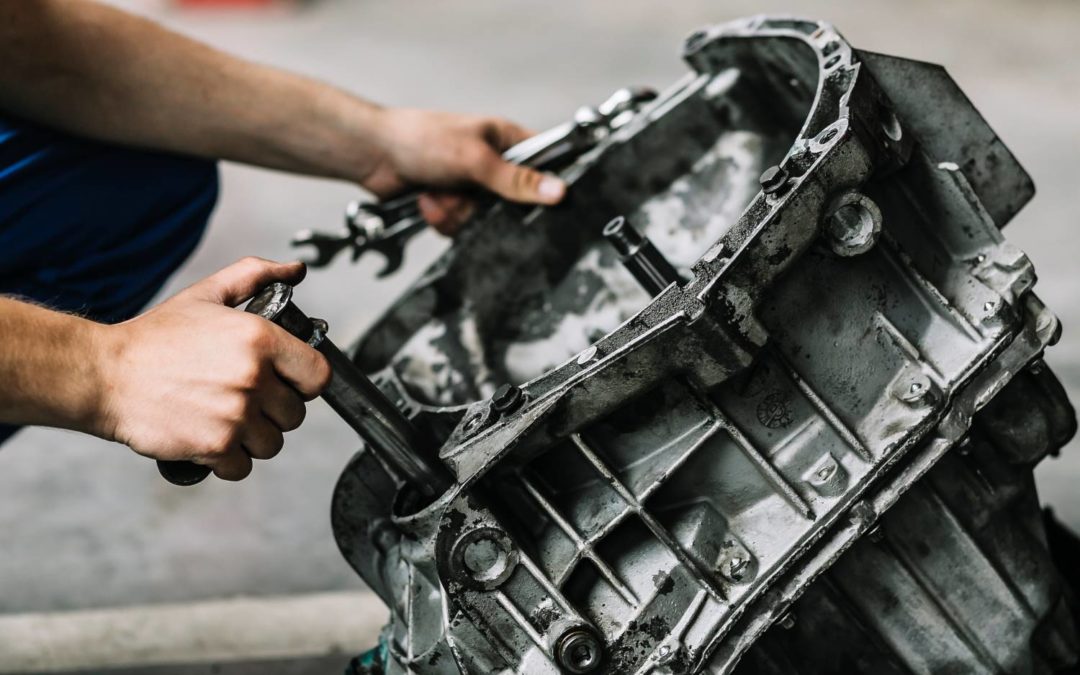Issues covered in the material:
- How to identify the first signs of an automatic gearbox malfunction
- What can cause a malfunction of an automatic gearbox
- What are the main automatic gearbox malfunctions and methods for their elimination
Many car owners are sure that the automatic gearbox is the most reliable among other transmissions. In reality, things are a little different. If mishandled, such a box will not last long. The material of our today’s article will help you learn how to identify malfunctions of an automatic gearbox at the initial stage.
The main symptoms of a malfunction of automatic gearboxes
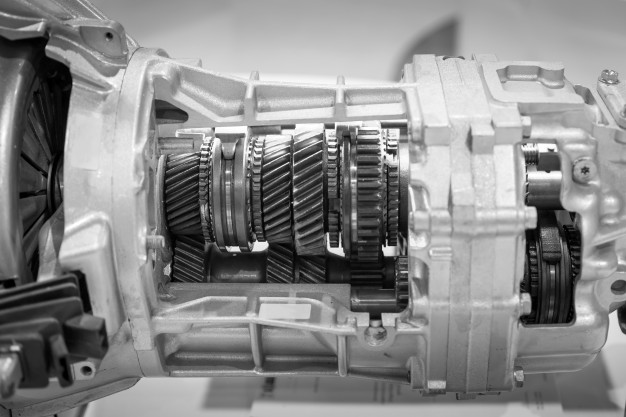
Surely you know that it is the automatic gearbox that experiences the maximum load during the car’s operation. Even though modern automakers produce high-resource gearbox, the automatic transmission is still a vulnerable element of the car. Quite a few signs are indicating a malfunction of an automatic gearbox. For example, one of the symptoms that the valve body is out of order is that the car will jerk at the moment of gear shifting. But shocks can also be different, which means that the reasons for this behaviour of your car are different.
Have you noticed any malfunction of the automatic gearbox? In this case, you should immediately identify the cause or go to a specialized auto centre for car repair. Another sign of a breakdown of this unit is that the speeds have stopped shifting, or the gears have been blocked altogether. Unfortunately, it is not permitted to use the machine in such a situation. Otherwise, it will lead to a complete breakdown of the car.
Often, a breakdown can be detected thanks to regulators and other sensors installed on the unit.
With their help, the car owner will be promptly warned of the problem.
For example, you can find out that:
- there is little gearbox fluid in the device;
- the working lubricant pressure is too low;
- The automatic transmission is overheated;
- other sensors are not functioning;
- modes are not switched.
To timely detect malfunctions in automatic transmissions, you need to receive error codes for the operation of the device after diagnostics and then decode them. There is another way: we ring the circuits, measure the pressure level, test the car while driving. But using such methods, it is not always possible to obtain reliable information. Most likely, you will need to remove and disassemble the automatic transmission.
If the machine behaves abnormally, the automatic transmission malfunction lamp flashes from time to time, it is recommended to change the oil first, filling in the amount required by the instructions. This manipulation will help if you have a new super-precise box or a tired automatic machine on a car with a range of 20,000 km or more.
In addition, without removing the automatic transmission, you can examine the valve body, all sensors and loops. They can cause damage to the machine. But if your vehicle’s mileage is more than 120,000 km or the car is constantly in emergency mode, most likely, these actions will not help solve the problem that has arisen.
Experts do not advise looking for automatic gearbox malfunctions by eye or other methods without opening the automatic transmission. This can lead to disastrous consequences.
Table of the main causes of automatic transmission malfunctions
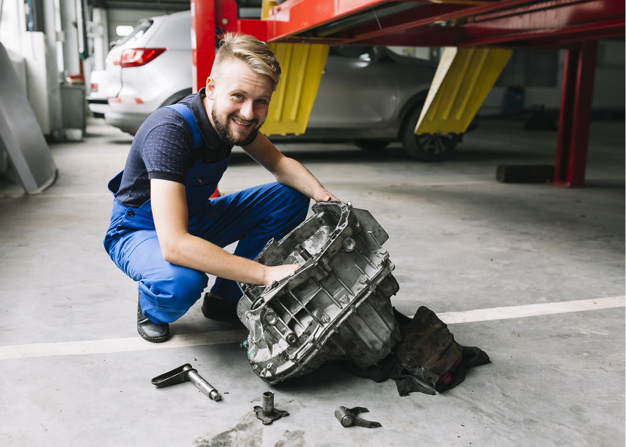
Automatic gearbox faults always change the behaviour of your car. Only full diagnostics will help to identify the cause of the breakdown. But in some cases, you can independently find out what led to the malfunction:
| Malfunction of an automatic transmission | Diagnosis |
| The car does not start moving, no matter what gear is on. You shift the lever to select a range, move it to all possible positions, but there is no gear shift push.
|
Low oil level |
| The filter is dirty | |
| The torque converter is broken | |
| Friction elements (brake bands, friction discs) are defective | |
| The drive gear of the oil pump is broken or worn out | |
| The cuffs in the pistons of the friction disc packs are destroyed or worn out | |
| Valve body valve or solenoid is faulty | |
| The car does not move, no matter which gear is on. If you switch the range selector lever, you can hear a specific jolt switch on the gear. | Low oil level |
| Damaged torque converter | |
| Dirty oil filter in the box | |
| The car does not move if the forward gear is on; when the reverse gear is engaged, the automatic transmission functions properly.
|
One of the valve body valves is broken |
| Friction discs in the forward clutch are worn | |
| O-rings of the forward clutch are worn out or destroyed | |
| The piston cups in the forward clutch are destroyed or worn out | |
| The car does not move; if the reverse gear is on, the automatic transmission is functioning properly in the forward gear | Brake band or other friction elements have worn out |
| Brake band piston rod broken | |
| The brake band piston collar is broken or worn out | |
| The machine cannot move backwards. If you switch the range lever to D and O / D, the first and second gears are engaged, while the third and fourth are not included.
|
The splines in the clutch drum housing are faulty |
| Forward clutch friction discs are worn | |
| O-rings of the forward clutch are torn or worn out | |
| Forward clutch piston cups are torn or worn | |
| The machine can move backwards, but if you switch the range selector lever to D and O / D, the first and second gears will be engaged, while the third and fourth are not included. | The valve or solenoid in the valve body is stuck or broken. |
| The car can only move on a straight road. If it is necessary to climb a hill, the wheels skid, the low gear is engaged too early. | The amount of oil in the automatic transmission is not enough |
| O-rings, forward clutch friction discs and piston cups are worn out | |
| The machine can move if the gear lever is in N | Friction discs and clutches stuck together |
| Piston and friction clutch stuck | |
| The car stalls during the start, as well as when you accelerate. If the speed is reached, the automatic transmission is functioning properly. | Forward clutch friction discs are broken. |
| The clutch piston cups are broken or worn. | |
| The gearbox shaft is slipping since the splines in the torque converter turbine hub are broken. | |
| Higher gears are included out of time: only when a high speed is reached | Valve in centrifugal regulator stuck |
| Valve drive cable – the throttle is not adjusted correctly | |
| The oil filter mesh in the automatic transmission is clogged | |
| When changing gears, the clutches slip | The amount of oil in the automatic transmission is not enough |
| The oil filter mesh is clogged | |
| The oil pressure is insufficient due to improper functioning of the solenoids or due to other damage to the valve body. | |
| KickDown mode does not work. That is, if you abruptly drown the gas pedal, the downshift will not turn on. | A pressure sensor or KickDown footswitch defective |
| Footswitch or pressure sensor circuit defective | |
| The valve body valve (which is involved in switching from third gear to second) is stuck. | |
| Throttle actuator adjustment is not correct | |
| When you drive, the car slips, jerking is felt | The freewheel is broken |
| The car does not drive, and it does not matter what position the gear lever is in. Line pressure is normal. | The splines in the hub of the torque converter turbine are faulty |
| The machine does not move, and it does not matter what position the gear lever is in. Line pressure low or none at all | The splines on the torque converter starter shaft are broken |
| The splines on the oil pump shaft are faulty | |
| When you change gears, you feel strong jolts. | Friction clutch discs are badly worn. |
| The valve in the valve body is faulty. | |
| The return spring of the valve body valve is broken | |
| The vehicle cannot pick up speed when moving forward or backwards. | The blades on the reactor or the turbine wheel of the torque converter are broken. |
| The blades on the reactor or the turbine wheel of the torque converter were deformed. | |
| The machine can move when the machine is cold. As soon as the box has warmed up, the car stops: movement is impossible, and it does not matter what speed you turn on. | The main oil pressure is low because the filter screen is dirty |
| The friction clutch disks are worn out, while the oil in the automatic transmission is too viscous | |
| In the area of the differential, an extraneous rumble, crackling is heard | Differential bearing is broken |
| Differential driven and driving gears are broken | |
| The pin of the satellites of the differential is jammed, there is a strong backlash. | |
| When you change gears without pressing the gas, the engine stops working. | The wheels of the torque converter are stuck (or some other breakdown of this unit) |
| Valves in the valve body are stuck | |
| Line pressure dropped sharply | The amount of oil in the automatic transmission is insufficient |
| Solenoids or valve body dirty | |
| Air cushion formation in oil channels | |
| Oil pump bypass valve stuck | |
| During idling, you hear extraneous sounds in the automatic transmission | Friction clutch discs are badly worn |
Deciphering the codes of the self-diagnostic system to identify the causes of the malfunction of the automatic transmission

To diagnose faults in automatic transmissions, a certain electronic system is used for self-diagnosis. It can be combined with the OBD-II system. The following are the most common automatic transmission errors:
P 0700 – the control unit is not functioning properly.
P 0701 – the presence of errors in the control unit.
P 0702 – The electrical component of the control system is not working properly.
P 0703, P 0719, 724 – malfunction of the torque sensor (when the speed is reset).
P 0704 – the readings of the clutch sensor are unreliable.
P 0705 – the selector position sensor readings are unreliable.
P 0706 – the selector sensor is not adjusted correctly.
P 0707 – P 0710 – the selector sensor readings are unreliable.
P 0711 – P 0714 – the coolant temperature sensor readings are unreliable.
P 0715 – P 0718 – turbine sensor readings are unreliable.
P 0720 – P 0723 – the shaft speed sensor readings are unreliable.
P 0725 – P 0728 – the readings of the engine speed sensor are unreliable.
P 0730 – the machine is not being adjusted correctly.
P 0731 – 1st gear is not adjusted correctly.
P 0732 – 2nd gear is not adjusted correctly.
P 0733 – 3rd gear incorrectly adjusts.
P 0734 – 4th gear is not adjusted correctly.
P 0735 – 5th gear is not adjusted correctly.
P 0736 – Reverse is not adjusted correctly.
P 0740 – P 0744 – breakage in the clutch.
P 0745 – P 0749 – the pressure regulator is faulty.
P 0750 – P 0754 – 1st shift solenoid is not working properly.
P 0755 – P 0759 – 2nd shift solenoid is not working properly.
P 0760 – P 0764 – 3rd shift solenoid is not working properly.
P 0765 – P 0769 – 4th shift solenoid is not working properly.
P 0770 – P 0774 – 5th shift solenoid is not working properly.
P 0780 – faults in the switch.
P 0781 – a breakdown in the 1st and 2nd switches.
P 0782 – a breakdown in the 2nd and 3rd switch.
P 0783 – a breakdown in the 3rd and 4th switch.
P 0784 – a breakdown in the 5th and 4th switch.
P 0785- P 0789 – the solenoid sensor shows false data.
P 0790 – Normal mode is not functioning properly.
P 0801 – reverse breakage.
P 0802 – malfunctions in the switching solenoid 1-4.
P 0803 – Backlight switching 1-4 is working with errors.
P 1701 – Reverse is not functioning properly.
P 1703 – a breakdown in the brake sensor.
P 1709 – Cannot determine P, N mode.
P 1711 – it is impossible to test the temperature sensor.
P 1728 – the slip sensor is faulty.
P 1729 – Four-wheel drive is not working properly.
P 1740 – the torque control unit is malfunctioning.
P 1741 – P 1744 – The converter clutch sensor is not working properly.
P 1745 – P 1749 – the electronic pressure regulator is faulty.
P 1751 – P 1761 – Shift solenoids are malfunctioning.
P 1780 – the control unit is not functioning properly.
P 1781 – malfunctions were detected in the all-wheel-drive switch.
P 1783 – increased temperature in the automatic transmission.
P 1788 – P 1789 – CCS solenoids are malfunctioning.
How to fix minor malfunctions of an automatic transmission
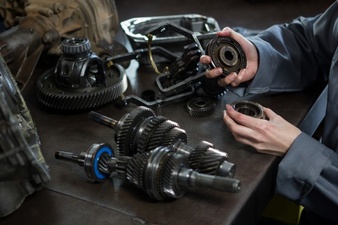
- Quick diagnosis by ear
After listening to the description of the problem that has arisen (according to the car owner), you can diagnose, for example, contamination of the sensor, breakdown in the loop that powers the ECU and solenoids. Moreover, for such work in-car services, they usually do not take payment.
However, the breakdown can be much more serious. It may even require an overhaul of the automatic transmission with its dismantling; we will talk about this separately. How to fix a breakdown on your own? Change the oil in the machine, set it to the required level. Often, such manipulations help to cure malfunctions in a four-speed automatic transmission in a car with a range of 20,000 kilometres.
- Diagnosis by touch
You just need to check the electrical circuit, and this work will take 2-3 minutes. To detect a more complex breakdown, you will have to dismantle the pallet. However, you will not leave an impressive amount in the car service to diagnose the machine, even in this case.
Without removing the automatic transmission, an experienced mechanic will be able to identify malfunctions in an automatic transmission using a stall test, check the line pressure, eliminate a short circuit in the electrical wiring, and study the codes of possible breakdowns.
What can you do yourself in such a situation? Just add the missing amount of oil or fill in a new one.
- Dismantling the machine
Is the automatic transmission malfunction lamp flashing, is only the third gear engaged, or is there any other malfunction from the previously described ones? Get ready for the need to disassemble the automatic transmission. Most likely, this procedure will be necessary if the machine has travelled more than 200,000 kilometres. Surely you will have to change the clutch of the gas turbine engine. It will be possible to detect defects in the operation of the box only after opening the machine.
Automatic transmission: malfunctions and their elimination
So, now you know the main symptoms of automatic transmission malfunctions. Let’s figure out what can cause the breakdown and how to fix it.
Problems with the rocker arm of the automatic transmission

If you have a vehicle with a box in which the connection between the selector and the transmission is mechanical, then most often, malfunctions arise from behind the scenes. It breaks down, and the modes of operation of the transmission do not switch. The first sign to look out for is that shifting the gear lever has become problematic. In the end, he can simply get jammed. To solve this problem, you will have to replace the stage. There are vehicle models in which these manipulations can be carried out without dismantling the automatic transmission. This means that fixing the breakdown will be less labour-intensive and time-consuming.
Leaking transmission oil
Among all the malfunctions of automatic transmissions, the most common is oil leakage between gaskets or oil seals. How do you know if your car has this problem? You just need to drive into a viewing pit or overpass. Did you see oil stains under the machine during your self-examination? We recommend visiting a specialized car service centre shortly. The mechanic will replace the gaskets, fill the transmission with new oil, and your car’s problem will be resolved.
Malfunction of the electrical control unit
Sometimes automatic transmission malfunctions are associated with problems in the electronic control unit of the gearbox. How to determine that this is the case? The signs are as follows: the turns for gear shifting are selected by the block incorrectly. Quite often, the automatic transmission is completely blocked. If your car has these symptoms, then you will need to install a new electronic control unit.
Sensor malfunction
Most often, car owners are faced with malfunctions of sensors such as ABS, camshaft sensor, throttle sensor, airflow sensor. To understand that this element is broken, the automatic transmission malfunction lamp will help: it does not flash constantly, but when you accelerate or a brake. Not in all cases, it will be possible to repair a broken mechanism. It is recommended to install a new sensor immediately. However, the cost of this element can be quite high.
The easiest way is to determine the breakdown of the automatic transmission input or output shaft rotation sensor. The automatic transmission malfunction lamp will flash when you put the lever in position D. However, sometimes, the lamp will come on regardless of the position of the lever. This malfunction can be determined only after computer diagnostics. It will not be possible to repair a broken unit. You will have to purchase a new sensor and install it. Replacing the sensor is quick, and you don’t have to pay a large sum for car service.
The occurrence of a malfunction of the oil temperature sensor
If the oil temperature sensor breaks down, the automatic machine will junk as soon as the oil warms up or when you start the car. It will be possible to determine such a breakdown using computer diagnostics. The solution to this problem is to install a new oil temperature sensor.
Malfunction of the automatic transmission selector position sensor
In this case, the malfunction of the automatic transmission makes itself felt through the indication of gear icons: they do not show the position of the lever in which it is currently located. However, in some cases, this symptom is absent, and the automatic transmission is functioning normally. It will be possible to identify the problem only with the help of computer diagnostics of the car.
There is a second way how to determine such a malfunction of an automatic transmission. You need to switch the lever in turn while watching what the lights show.
Replacing this sensor is inexpensive. Sometimes disassembly of a broken sensor with replacement of its faulty part helps. Important! Make sure the contacts are not oxidized.
If you notice a malfunction of the automatic transmission, immediately visit a specialized car service to fix the breakdown.
Malfunction of the “machine” shaft rotation sensor
You can immediately identify a breakdown of the automatic transmission input or output shaft rotation sensor. The automatic transmission malfunction lamp blinks when you set the lever to D. However, the lamp can come on in any lever position. Again, you will need to use computer diagnostics to determine this problem.
Unfortunately, the automatic transmission shaft rotation sensor cannot be repaired. You will have to purchase and install a new unit. Fortunately, in a car service, the car will be quickly repaired, and a small amount will be charged for services.
Valve body problems
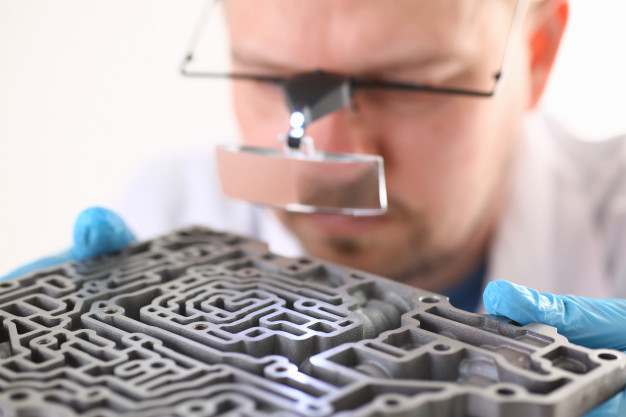
Older cars have hydraulic units that rarely break. They are made of cast iron, no special adjustment is required, and no calculations and channels must be absolutely accurate. However, the valve body installed on modern cars is made of a fragile material – it is aluminium. There are many small channels in it; they quickly clog up (after all, the oil in the automatic transmission is not always clean).
This is how they are bored, as a file. This means that regular cleaning of the channels is necessary, and this is usually done during a car overhaul. The service life of such hydraulic units is rather low compared to other elements of the machine. Therefore, this type of automatic transmission malfunction occurs quite often.
Dirt clogs solenoid spools. As a result, they begin to stick, or canals are bored. As a result, thin electronics begin to work abnormally. All this leads to the following result: if the abnormal operation of the valve in the clutch occurs, excessive pressure (or insufficient) is obtained. Further, the slipping of the clutches begins and, as a result, their breakage. Behind them, the entire machine, operating on burnt oil, begins to break down.
Solenoid plungers, which are clogged with oil, begin to flood. Their normal switching stops: the owner of the car feels sharp jerking of the automatic transmission.
However, manufacturers have gone even further. Now they began to make the wiring of the electrical part of the machine in the form of the thinnest loops. The electric control unit is not placed inside the passenger compartment but in the hydraulic plate. Therefore, its heating became even stronger.
Obviously, as a result of these “improvements”, the electronic component of the machine turns out to be the weakest point of this vehicle unit. So, small detached wiring will now lead to strong shocks during automatic transmission switching.
The occurrence of a problem with the solenoid “machine” or electronic pressure regulators
If this problem is identified, the automatic transmission malfunction lamp will not flash in all modes but during certain shifts. From the point of view of mechanics, everything is obvious here: the gears will not switch, the driver will notice slipping, sharp jolts.
Only computer diagnostics will help to establish a complete picture of everything that is happening. Are you a serious believer in repairing your car? Then take measurements of the main indicators. For example, determine the inductance as well as the resistance of the circuit.
How to fix this breakdown? Only replace the faulty solenoid or pressure regulator. You will have to install a new unit in exceptional cases, but then you will have to spend a lot. It is not recommended to repair the unit completely. The fact is that the cost of the work performed will often be higher than the purchase of a new unit.
How to prevent automatic transmission malfunctions
All automatic transmission malfunctions are divided into 2 types:
- mechanical wear of elements;
- improper operation of the automatic transmission.
Compared to mechanics, an automatic transmission is not as susceptible to errors during operation. Surely no one can spoil the automatic transmission by burning it at high speeds. The fact is that the machine itself will choose lower or higher gears. Therefore, cars with an automatic transmission are the best choice for beginners with little driving experience.
The main operating principle of the machine is that the car should always be well warmed up before starting to move. This is especially true for those who used a harsh climate, with long and cold winters. The minimum warm-up time for a car started during freezing weather is 10-15 minutes. Even if you are in a great hurry, you should not risk it because solving the problem with the automatic transmission will not be easy.
It is not necessary to constantly switch the lever of the machine. Usually, car owners who previously had a car on the mechanics like to do this. Also, when stopping at traffic lights or an intersection, do not set the switch to park mode or N. It is recommended that you perform limited manoeuvres with the vehicle idling.
The same applies to engaging reverse gear only after the vehicle has come to a complete stop. Otherwise, gears and automatic transmission elements will begin to break.
Many car owners do not adhere to the rules in the operating instructions for the car, which says how often the oil in the machine should be changed. An untimely oil change can cause the automatic transmission elements to be poorly lubricated. Therefore, the box will overheat. Since there is not enough oil, the moving parts of the machine will break prematurely. And this means that it will take a lot of money and time to restore the automatic transmission. Do you want to avoid all the unpleasant consequences? Inspect the vehicle as often as indicated in the instructions.
Also, remember that you can only buy original vending machine oil. Poor quality oil poured into the automatic transmission will cause the solenoids to wear out prematurely. And replacing them is a rather complicated procedure: you will have to spend a lot of time and money fixing the breakdown.
How to prevent automatic transmission malfunction? Check and prevent units on time, change the oil in the automatic transmission. The instructions for your car should indicate through what mileage this procedure should be carried out. Usually, it is 7.5-15 thousand km in difficult operating conditions of the car – 5 thousand km.
If the machine is constantly operated at high speeds, then the clutches of the machine will quickly grind off and burn out. The whole difficulty of repairing an automatic transmission is that to identify the cause of a malfunction in an automatic transmission; it will be necessary to open the transmission. Experts advise against repairing the machine yourself. It is recommended to contact a specialist in a proven car service.

